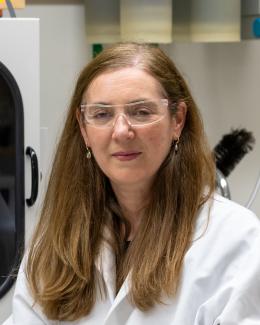October 1, 2018 — With an organ-on-a-chip technology, scientists at Oak Ridge National Laboratory are testing the effects of radiation on cells that mimic human respiration. The project, in collaboration with Larry Millet of the University of Tennessee, involves growing a microenvironment of human cell layers, similar to those found in human lungs, in a microfluidic chip, and then exposing the chip to ionizing radiation for subsequent analysis of the cells’ response. While the technology is not new, the team has worked to incorporate and combine unique design elements and architectures, allowing them to collect more data. “For now, we are focusing on building the microenvironments to increase the amount of information we receive per experiment,” said ORNL’s Sandra Davern. “But, in the future, the process could be used to advance biomedical research, and aid in the discovery, testing and development of novel pharmaceuticals to treat disease, as well as mitigating agents suitable for an emergency response to radiological events.”




